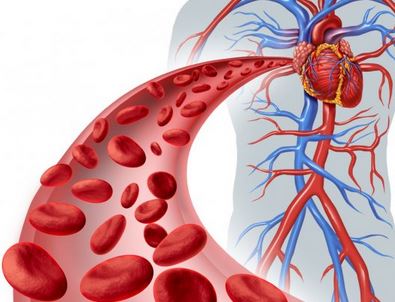Circulation boosters are important for improving blood flow and overall health. These can include dietary supplements, exercises, and lifestyle changes. Each method has its own benefits, how they work, and potential downsides. Understanding these can help individuals choose the best circulation booster for their needs.
Dietary supplements are one of the most common ways people enhance circulation. Some supplements contain ingredients that promote the production of nitric oxide in the body. Nitric oxide helps dilate blood vessels, which can lead to better blood flow (Gonzalez et al., 2023). For example, L-arginine and citrulline malate are popular supplements used for this purpose. L-arginine is known to increase nitric oxide levels, which improves vascular health (Kurhaluk and Tkaczenko, 2025). Research shows that when healthy young athletes took dietary supplements, their muscular perfusion improved, meaning that blood flow to the muscles increased (Bürkle et al., 2022).
Another common supplement is hesperidin. This natural compound found in citrus fruits helps improve endothelial function and decrease inflammation during exercise, which can contribute to better workout performance and blood circulation (Imperatrice et al., 2022). A comprehensive review discussed how food supplementation influences microcirculation and suggests that certain dietary choices can significantly enhance blood flow (Raposo et al., 2021).
In addition to supplements, regular exercise is a powerful way to boost circulation. Physical activity increases heart rate, which helps pump more blood throughout the body. Activities like walking, running, and swimming are particularly effective. High-intensity interval training (HIIT) is especially beneficial, as it can stimulate blood flow even after the workout is finished (Nobari et al., 2025). Exercise not only improves circulation but also supports overall cardiovascular health, reducing the risk of heart disease (Nichols et al., 2022).
However, not all supplements and exercises promote positive outcomes. Some individuals might experience side effects from dietary supplements, such as headaches or gastrointestinal issues. Additionally, depending on the person, supplements like L-arginine might lower blood pressure too much in certain individuals (Kurhaluk and Tkaczenko, 2025). Therefore, consulting a healthcare professional before starting any supplement is important.
Lifestyle changes can also have a significant impact on circulation. Simple changes, like quitting smoking, reducing alcohol intake, and managing stress levels, can lead to better blood flow. Smoking harms blood vessels and raises the risk of vascular diseases. By quitting smoking, individuals can enhance circulation significantly (Welten et al., 2014). Stress management techniques, such as yoga and meditation, improve overall health and can also promote better circulation by allowing blood vessels to relax (Lim, 2017).
Furthermore, staying hydrated is crucial for circulation. Water helps maintain blood volume and supports the efficiency of blood circulation. Eating a balanced diet rich in fruits, vegetables, whole grains, and lean proteins also supports vascular health. A diet low in saturated fats and high in omega-3 fatty acids can reduce inflammation and promote better blood flow (Raposo et al., 2021).
However, making lifestyle changes can require time and effort. Many people find it difficult to stick to dietary changes or to maintain a consistent exercise routine. Motivation can wane after a few weeks, leading to setback or failure to maintain the new habits. This can create a cycle of discouragement. Additionally, those who don’t notice immediate results may become frustrated and give up (Nichols et al., 2022).
Circulation boosters play a vital role in enhancing blood flow and overall health. Dietary supplements, exercises, and lifestyle changes each have their unique benefits and mechanisms. Supplements like L-arginine and hesperidin can help improve blood flow, while regular exercise and hydrating contribute significantly to cardiovascular health. However, there can be potential drawbacks, such as side effects from supplements and challenges in making lasting lifestyle changes. Therefore, it is essential for individuals to approach circulation boosters thoughtfully and consult with healthcare providers for guidance. With the right knowledge and commitment, boosting circulation can lead to improved health and well-being overall.
Citations:
Raposo, A., Saraiva, A., Ramos, F., Carrascosa, C., Raheem, D., Bárbara, R. and Silva, H., 2021. The role of food supplementation in microcirculation—A comprehensive review. Biology, 10(7), p.616. https://www.mdpi.com/2079-7737/10/7/616
Bürkle, F., Doll, J., Neide, A., Gantz, S., Tsitlakidis, S. and Fischer, C., 2022. New perspectives for investigating muscular perfusion response after dietary supplement intake: an exploratory, randomized, double-blind, placebo-controlled crossover trial in healthy young athletes using contrast-enhanced ultrasound (CEUS). Journal of the International Society of Sports Nutrition, 19(1), pp.397-416. https://www.tandfonline.com/doi/abs/10.1080/15502783.2022.2097018
Gonzalez, A.M., Townsend, J.R., Pinzone, A.G. and Hoffman, J.R., 2023. Supplementation with nitric oxide precursors for strength performance: A review of the current literature. Nutrients, 15(3), p.660. https://www.mdpi.com/2072-6643/15/3/660?utm_campaign=releaseissue_nutrientsutm_medium=emailutm_source=releaseissueutm_term=doilink163
Nichols, W.W., O’Rourke, M., Edelman, E.R. and Vlachopoulos, C. eds., 2022. McDonald’s blood flow in arteries: theoretical, experimental and clinical principles. CRC press. https://books.google.com/books?hl=en&lr=&id=pKYIEQAAQBAJ&oi=fnd&pg=PP1&dq=best+circulation+booster+devices+and+supplements+for+improved+blood+flow&ots=zwb2zZiLdG&sig=YsRKVt8EjeHF9WPuaFlYyyIuIOI
Welten, S.M., Bastiaansen, A.J., de Jong, R.C., de Vries, M.R., Peters, E.A., Boonstra, M.C., Sheikh, S.P., La Monica, N., Kandimalla, E.R., Quax, P.H. and Nossent, A.Y., 2014. Inhibition of 14q32 MicroRNAs miR-329, miR-487b, miR-494, and miR-495 increases neovascularization and blood flow recovery after ischemia. Circulation research, 115(8), pp.696-708. https://www.ahajournals.org/doi/abs/10.1161/CIRCRESAHA.114.304747
Nobari, H., Samadian, L., Saedmocheshi, S., Prieto-González, P. and MacDonald, C., 2025. Overview of mechanisms related to citrulline malate supplementation and different methods of high-intensity interval training on sports performance: A narrative review. Heliyon, 11(4). https://www.cell.com/heliyon/fulltext/S2405-8440(25)01029-1
Lim, P.H., 2017. Asian herbals and aphrodisiacs used for managing ED. Translational andrology and urology, 6(2), p.167. https://pmc.ncbi.nlm.nih.gov/articles/PMC5422695/
Kurhaluk, N. and Tkaczenko, H., 2025. L-Arginine and Nitric Oxide in Vascular Regulation—Experimental Findings in the Context of Blood Donation. Nutrients, 17(4), p.665. https://www.mdpi.com/2072-6643/17/4/665
Imperatrice, M., Cuijpers, I., Troost, F.J. and Sthijns, M.M., 2022. Hesperidin functions as an ergogenic aid by increasing endothelial function and decreasing exercise-induced oxidative stress and inflammation, thereby contributing to improved exercise performance. Nutrients, 14(14), p.2955. https://www.mdpi.com/2072-6643/14/14/2955
Yoshizawa, K., Kobayashi, H., Kaneki, A., Takenouchi, M., Belletto, J., Baldwin, A. and Anzai, T., 2023. Poly (2-methoxyethyl acrylate)(PMEA) improves the thromboresistance of FRED flow diverters: a thrombogenic evaluation of flow diverters with human blood under flow conditions. Journal of NeuroInterventional Surgery, 15(10), pp.1001-1006. https://jnis.bmj.com/content/15/10/1001.abstract
University lecturer, runner, cynic, researcher, skeptic, forum admin, woo basher, clinician, rabble-rouser, blogger, dad.



